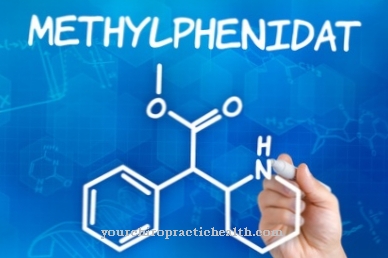Abacavir is a drug that inhibits the replication and release of viruses. Abacavir, in particular, is used as an antiviral in HIV-infected patients. It is an element in a combination therapy.
What is abacavir?

GlaxoSmithKline plc. (GSK) is a British pharmaceutical company that manufactures the drug abacavir. As part of an antiretroviral combination therapy, it is used to treat people with HIV-1.
Abacavir belongs to a group of nucleoside reverse transcriptase inhibitors (NRTIs). It is a nucleoside analog. This is similar to the natural nucleoside. Their action starts with the enzyme reverse transcriptase. This enzyme is part of retroviruses and transcribes the viral RNA genome into DNA.
Abacavir competes with the natural nucleosides. However, it does not have a 3rd hydroxyl group. This means that no chain extension can take place. Abacavir therapy may only be started after a genetic test, as life-threatening reactions are possible with a certain gene marker (HLA-BSternchen5701).
Pharmacological effect
Abacavir is a nucleoside analog. The 3rd hydroxyl group is missing. This prevents chain lengthening during transcription. Transcription describes the biological process by which genetic information is transferred from the DNA strands to the RNA.
The base sequences of RNA and DNA must be complementary for this. The transcription is then catalyzed in the cell nucleus. Abacavir works against this. It inhibits viral growth. Pharmacodynamically, abacavir is first converted to a triphosphate. These are chemically synthesized equivalents of phosphoric acid. Furthermore, the base portion is biochemically converted or broken down by the body's own enzyme systems. A biochemically active metabolic product is created.
This metabolic product (carborvir triphosphate) inhibits chain elongation and thus blocks transcription. In addition to the manipulation of the transcriptase, there is also a termination of the DNA chain formation. The missing hydroxyl group prevents a link on 2 sides. Treatment with abacavir or a combination of NRTIs lower the viral load.
At the same time, an increase in the number of CD4 cells is caused. According to scientific studies, the use of abacavir slows the progression of the immune deficiency, reduces typical AIDS infections and thus has a significantly life-prolonging effect. However, according to other study results, the benefit wears off over time. This is due to the versatility of the H virus.
Medical application & use
Abacavir is a synthetic molecule that builds up corresponding inhibitory activities against the immune deficiency AIDS in the body. Abacavir is not broken down in the body by the cytochrome P450 system, but by alcohol dehydrogenase and furthermore by glucuronyl transferase.
Interactions with other drugs are largely avoided. Abacavir shows good efficacy against HIV-1 in vitro and its effect can be increased with amprenavir, nevirapine and zidovudine. Combined drugs, such as lamivudine and stavudine, also significantly increase the effect. The viral resistance to abacavir develops only slowly. It requires a multitude of mutations.
In adults treated with a combination of abacavir with lamivudine and zidovudine, 70 percent had a viral load after 48 weeks that was no longer detectable. The CD-4 cell count also increased significantly. A corresponding comparative study was carried out in children with HIV-1. These children had an open-label NRTI and the percentage of detectable viral load (less than 400 copies / ml) was significantly higher in combination with abacavir than with comparable drugs.
Risks & side effects
In the case of known hypersensitivity to abacavir (checked by genetic test) or in the case of severe liver dysfunction, the drug should not be taken. The use of abacavir during pregnancy or breastfeeding is only recommended to a limited extent.
Furthermore, hepatitis, metabolic acidosis or hepatomegaly speak against the use of the drug. If the patient is known to have high risk factors for liver disease or if the patient has a very high viral load, the administration of abacavir, especially in combination with lamivudine and zidovudine, is questionable.
Moderate liver dysfunction or end-stage kidney disease are also relative contraindications to abacavir. About 5 percent of patients show hypersensitivity reactions. Symptoms include rash, nausea, vomiting, abdominal pain, cough, elevated liver values, mouth ulcers, headache, and a general feeling of illness.



























